Geological Sciences Research Facilities
The Geological Sciences Department at Geneseo is equipped with a number of high-tech labs that support undergraduate research in diverse areas of geologic interest.
Rock Prep Lab
This two-room laboratory (ISC 20A and 21) hosts several pieces of equipment for mechanical processing of rock and sediment. Major equipment includes:
- Kaw crushers
- Disk mill
- Ball mill
- Shatter box
- Frantz magnetic separator
- Shaker tables
- Slab saw
- Trim saws
The rooms have abundant bench space for preparing samples for a variety of physical (e.g., thin section) and chemical analyses (e.g., XRD, XRF, SEM).
Procedures and safety information for operating equipment in the Rock Prep Lab are available from faculty members of Geological Sciences.
X-Ray and SEM Labs
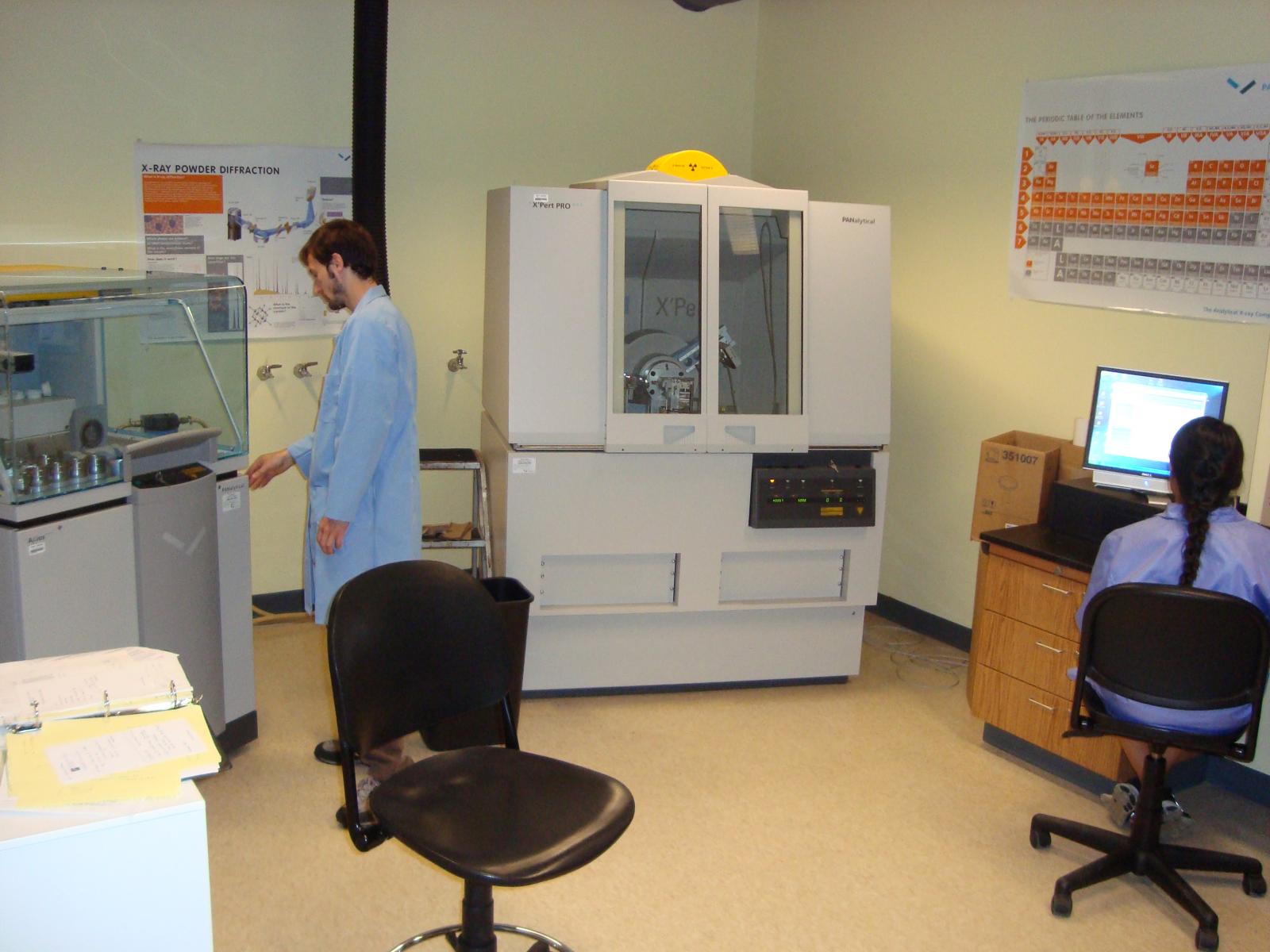
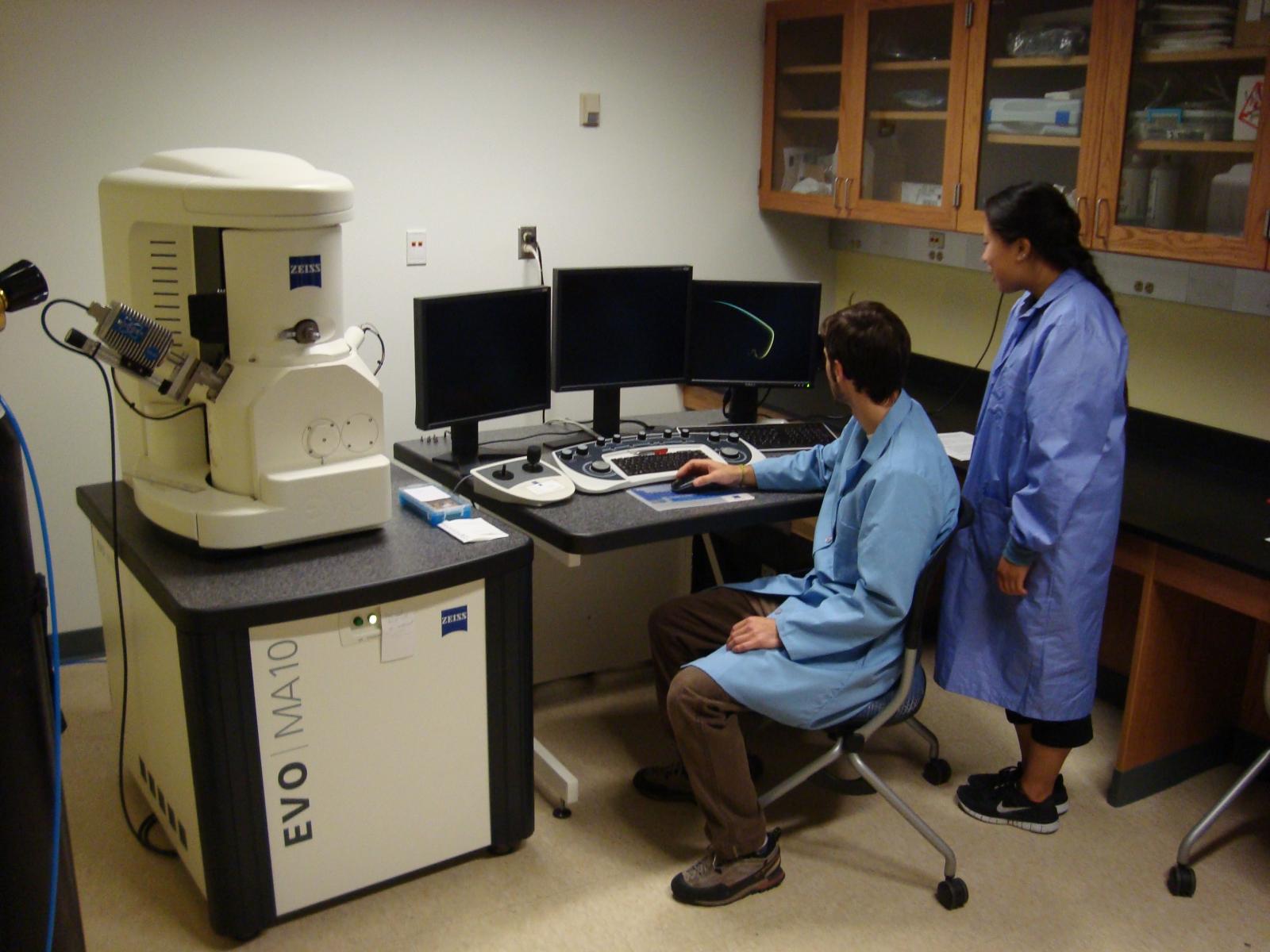
The Department of Geological Sciences has four major analytical instruments:
- Panalytical X-Pert Pro Powder X-ray Diffractometer (XRD)
- Panalytical Axios X-ray Fluorescence Spectrometer (XRF)
- Zeiss SMT EVO MA-10 Scanning Electron Microscope (SEM)
- Thermo iCAP 7400 dual ICP-OES
The X-Ray and SEM instruments are housed in ISC 17. Sign up to use the instruments here.
The XRD is used to determine the identity of crystalline compounds. This machine analyzes materials to determine their d-spacings (spacing of atomic planes). The d-spacing information is then matched to a database of known crystalline compounds to confirm an identity. The XRD is used by faculty and students in applications of petrology, environmental geology and archaeology.
The XRF provides quantitative analysis for major and trace elements. When analyzing for major elements, samples are usually fused into glass beads, which requires a minimum of 1.5 g of sample. When analyzing for trace elements, samples are powdered and then pressed into a packed pellet, which requires 6 g of sample. The XRF is used by faculty and students in applications of petrology, environmental geology and archaeology.
The SEM is equipped with a Bruker Energy Dispersive Spectrometer (EDS) system. The EDS allows for qualitative analysis of major elements and the SEM allows us to image the topography of samples as well as the relative chemistry of a sample through the use of a back-scattered electron detector (where materials that are elementally heavy are brighter than those that contain only light elements). The SEM is used by faculty and students in applications of paleontology, stratigraphy and mineralogy.
Earth Materials and ICP-OES Lab
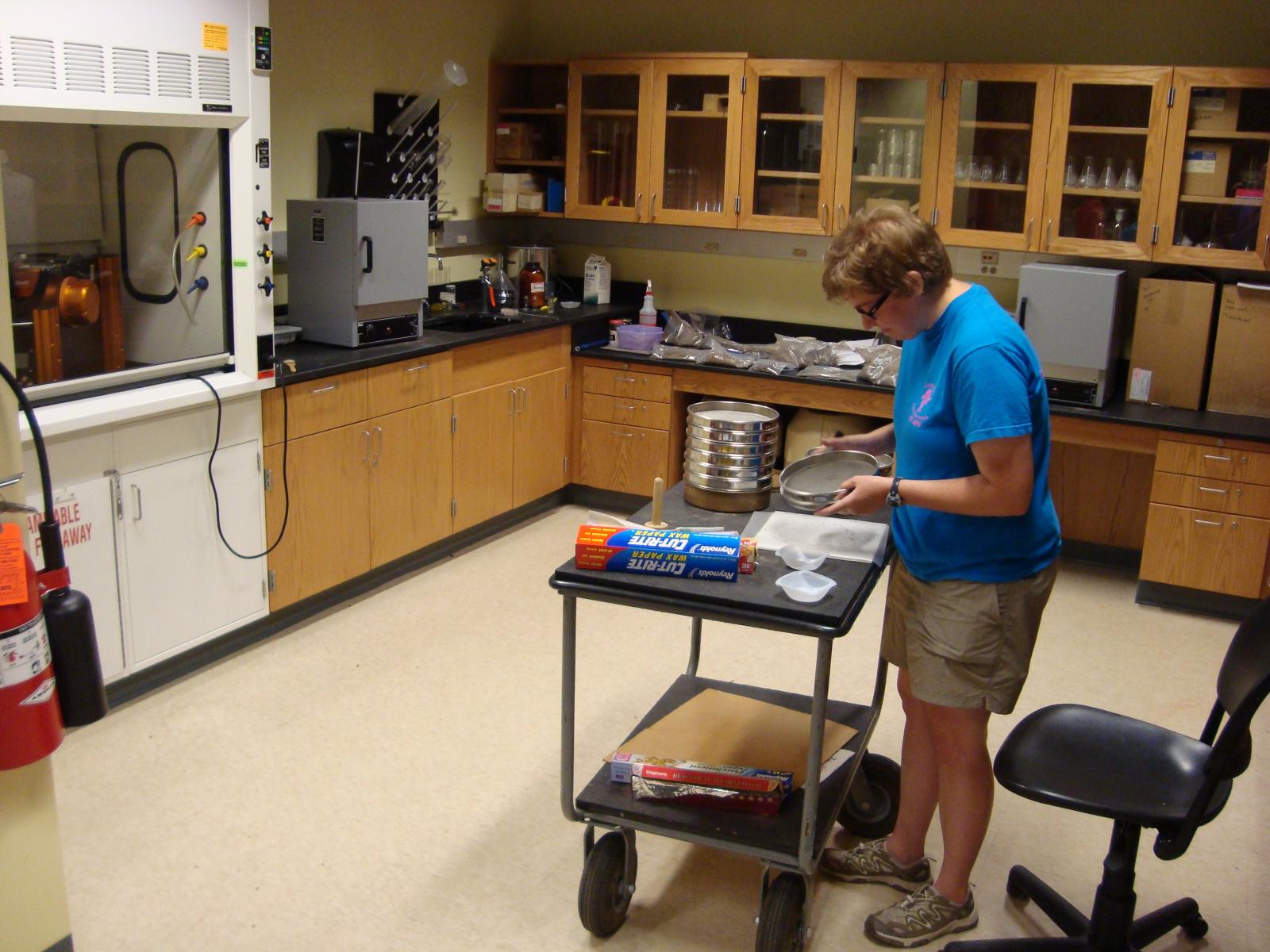
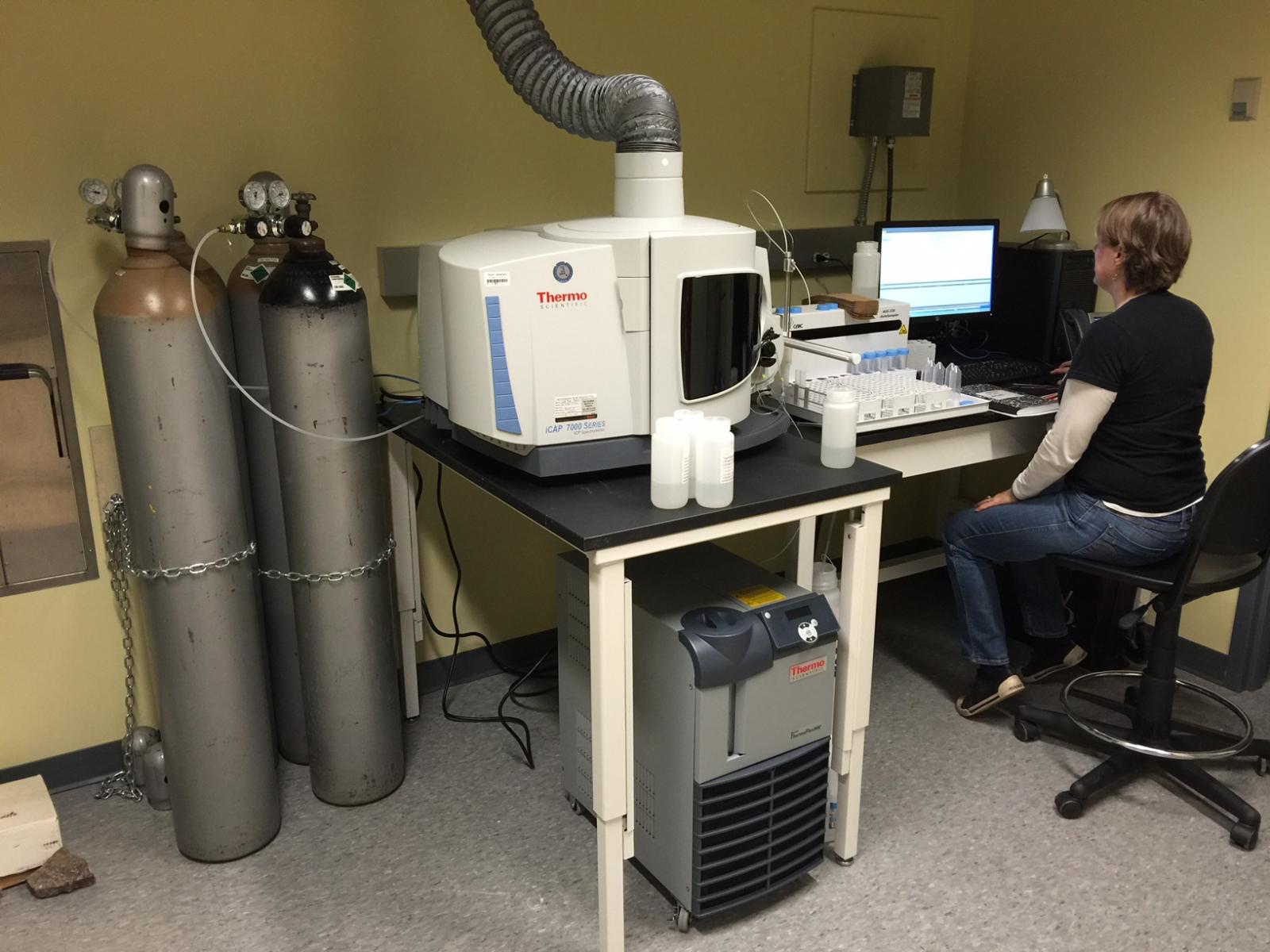
This lab occupies two 440 sq ft rooms (ISC 8A and 18) and houses a bottom-loading muffle furnace and a more traditional front-door furnace. These furnaces are used to melt/fuse samples and to carry out Loss On Ignition (LOI) studies. Also available through this lab is a Katanax K1 fluxer, which is used to fuse powdered samples into borate glass beads that are analyzed with the XRF. A Mettler Toledo precision balance, fume hoods, and several petrographic microscopes are also available in this lab. Also available in this space is a small collection of geological (rock) reference standards.
Room 18 houses the new iCAP 7400 dual ICP-OES, used for measuring elemental concentrations in samples of water and dissolved rock.
For more information, contact Dr. Dori Farthing.
Planetary Sciences Lab
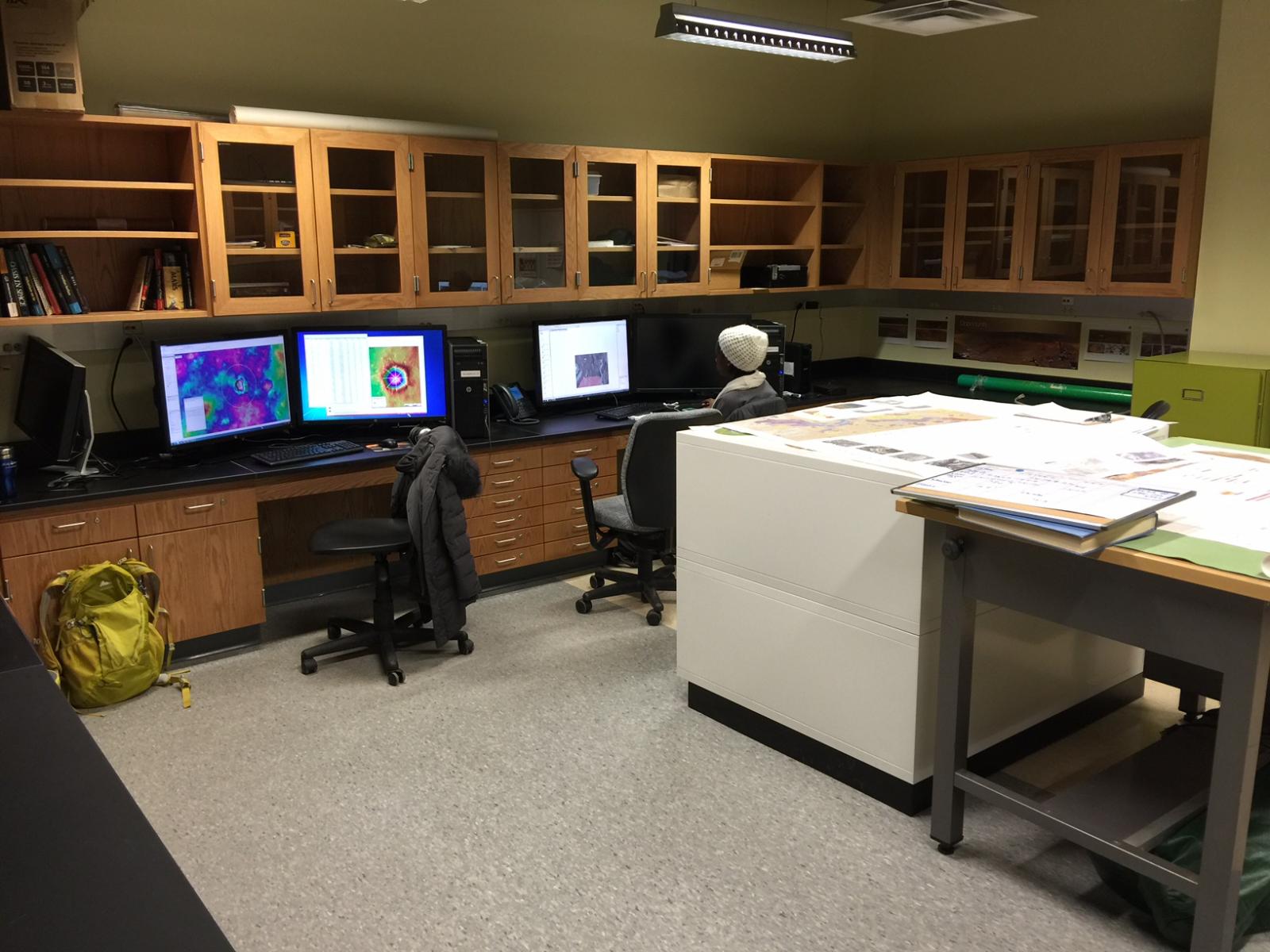
This facility is designed to work with planetary datasets from NASA and ESA (European Space Agency)-led missions. The lab is equipped with three high-end workstation desktops that are used to obtain relevant datasets, process these datasets for ingestion into Geographical Information Systems, and analyze the datasets to answer critical questions about the evolutionary history, surface processes, and surface composition of terrestrial planets in the solar system (Earth, Moon, Mars, Mercury, Venus). The workstation computers include two Windows-based PCs with Intel Xeon processors (3.50 GHz), 64 Gb of RAM, and dual 30-inch monitors for use of ArcGIS 10.1. A third Mac workstation with similar capabilities is available for image processing of raw data using the United States Geological Survey planetary image processing software (ISIS), construction of digital terrain models using the NASA Ames Stereo Pipeline, and for spectral mapping of multispectral and hyperspectral imagery using the GIS-based program ENVI.
For more information, contact Dr. Nicholas Warner
Magnetics Lab

This lab (ISC 8B) is focused on the collection of paleomagnetic and magnetic susceptibility data. Paleomagnetic data are collected using a AGICO JR6-A Spinner and a Sapphire Alternating Field Demagnetizer. Magnetic susceptibility data are collected with a AGICO MFK-1 Kappabridge, which is capable of measuring both bulk susceptibility values and characterizing the anisotropy of magnetic susceptibility. Additionally, this lab houses field sampling equipment (portable rock drill, pump can, orienting kit, etc.). Support facilities in the rock preparation room include a drill press with water swivel for coring oriented hand samples collected in the field and a dual bladed rock saw for trimming cores to the proper length for analysis.
For more information, contact Dr. Scott Giorgis.
Water Chemistry Lab
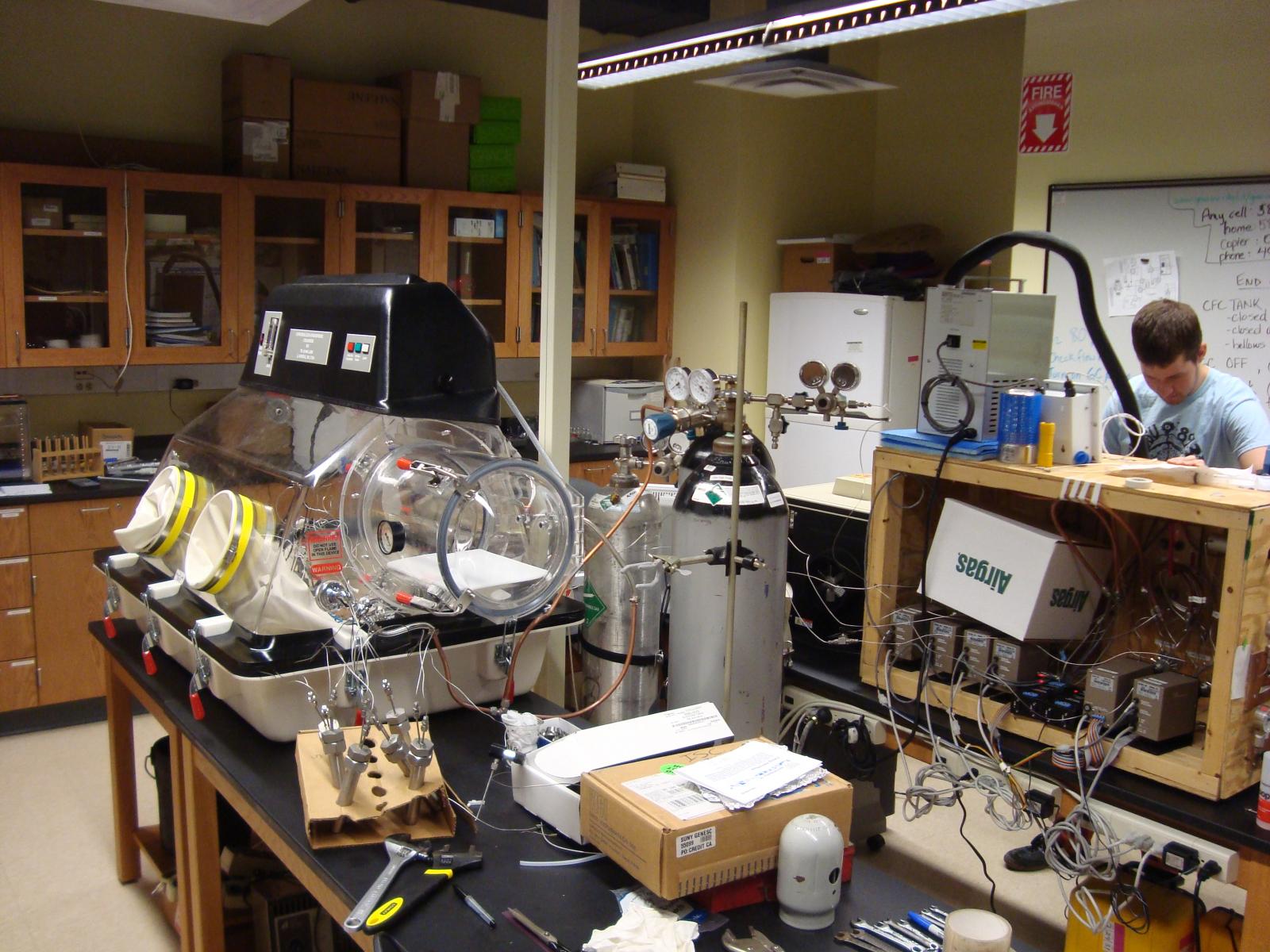
The primary focus of the water chemistry lab (ISC 248) is the preparation and analysis of water samples for the measurement of chlorofluorocarbons (CFCs), and the performance of sorption experiments of CFCs to geologic materials. The lab houses a Shimadzu 8A gas chromatograph with a CBM-102 communications bus module and numerous stainless steel components (Valco multiport valves, traps, compressed gases, tubing), Barnstead immersion heater, Thermo Electron neslab CC 65 cryogenic cooler, Crytrol controller, flow meters, metering valves, barometer, dewards, heating tape and other assorted supplies for the purge-and-trap procedure to strip CFCs from water samples, trap the CFCs while removing unwanted gases from the gas stream, and analyze for CFCs. A Plas-Labs Scientific Division anaerobic chamber, model No. 855-AC, is used to maintain a CFC-free atmosphere for the performance of CFC sorption experiments. In addition to the dedicated space for the analysis of CFCs, the lab also contains a Safeaire restricted bypass chemical fume hood, reverse osmosis house water and secondary Millipore Milli-Q Ultrapure water purification system, refrigerator with freezer, sample storage space, water sample bottles, water filtration supplies, ground water sampling equipment (Grundfos pump, bailers), water level meters, conductivity meters, a Hydrolab, a high-precision Mettler analytic balance, and other standard laboratory supplies.
For more information, contact Dr. Amy Sheldon.
Remote Sensing and Visualization Lab
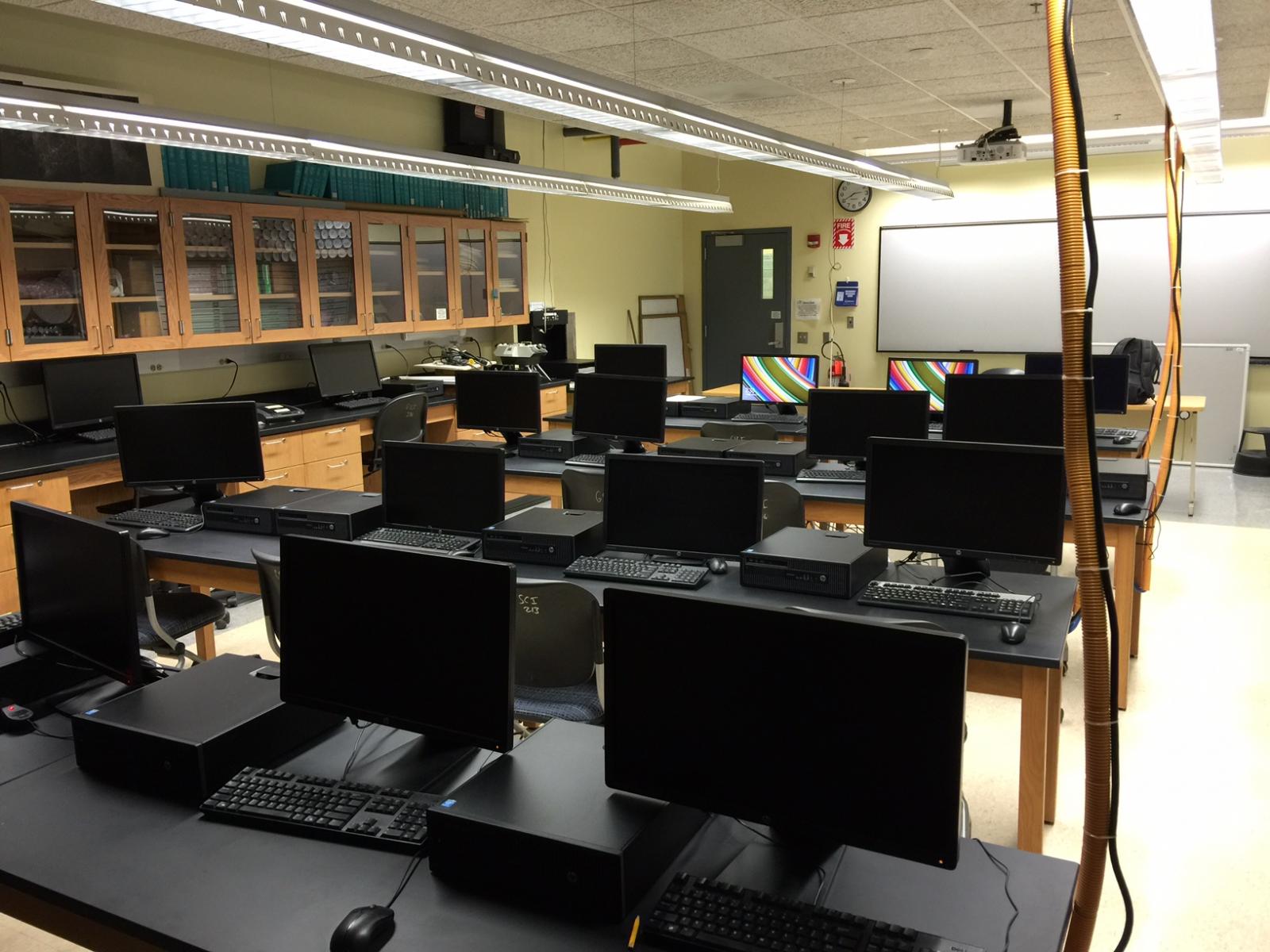
This laboratory occupies ISC 236 and includes 25 GIS workstations (hp Desktop PCs). Each PC runs Windows 8 and has software available for word processing, graphic design and presentation, data analysis, spatial analysis, and GIS. The GISs used on these computers are ENVI (for remote sensing) and ArcGIS 10.2 with numerous extensions.
The laboratory has space for 25 students and is equipped with presentation technology. Faculty and students use this lab for GIS applications in geology, running specific software for geophysics applications, graphic design, and preparing presentations.
For more information, contact Dr. Nicholas Warner
Wave Tank and Flume Lab
The wave tank and flume (ISC 20) were acquired by the Department of Geological Sciences in 2006. The wave tank is primarily used for teaching shoreline processes and for conducting fluvial sedimentation experiments. The flume is used for simulating shallow-depth stream flow and bedform developed.
